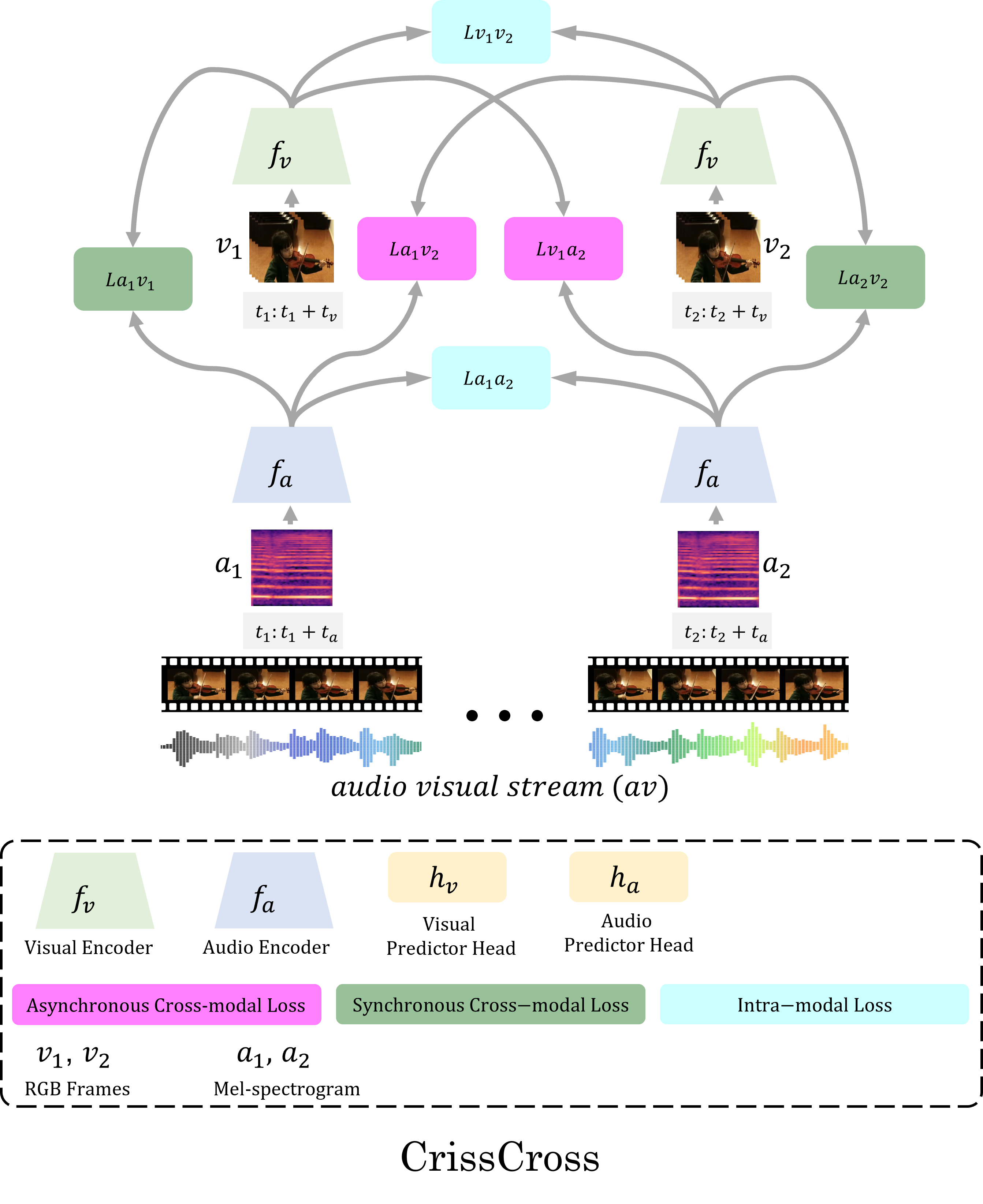We present CrissCross, a self-supervised framework for learning audio-visual representations. A novel notion is introduced in our framework whereby in addition to learning the intra-modal and standard synchronous cross-modal relations, CrissCross also learns asynchronous cross-modal relationships. We perform in-depth studies showing that by relaxing the temporal synchronicity between the audio and visual modalities, the network learns strong generalized representations useful for a variety of downstream tasks. To pretrain our proposed solution, we use 3 different datasets with varying sizes, Kinetics-Sound, Kinetics400, and AudioSet. The learned representations are evaluated on a number of downstream tasks namely action recognition, sound classification, and action retrieval. Our experiments show that CrissCross either outperforms or achieves performances on par with the current state-of-the-art self-supervised methods on action recognition and action retrieval with UCF101 and HMDB51, as well as sound classification with ESC50 and DCASE. Moreover, CrissCross outperforms fully-supervised pretraining while pretrained on Kinetics-Sound.
